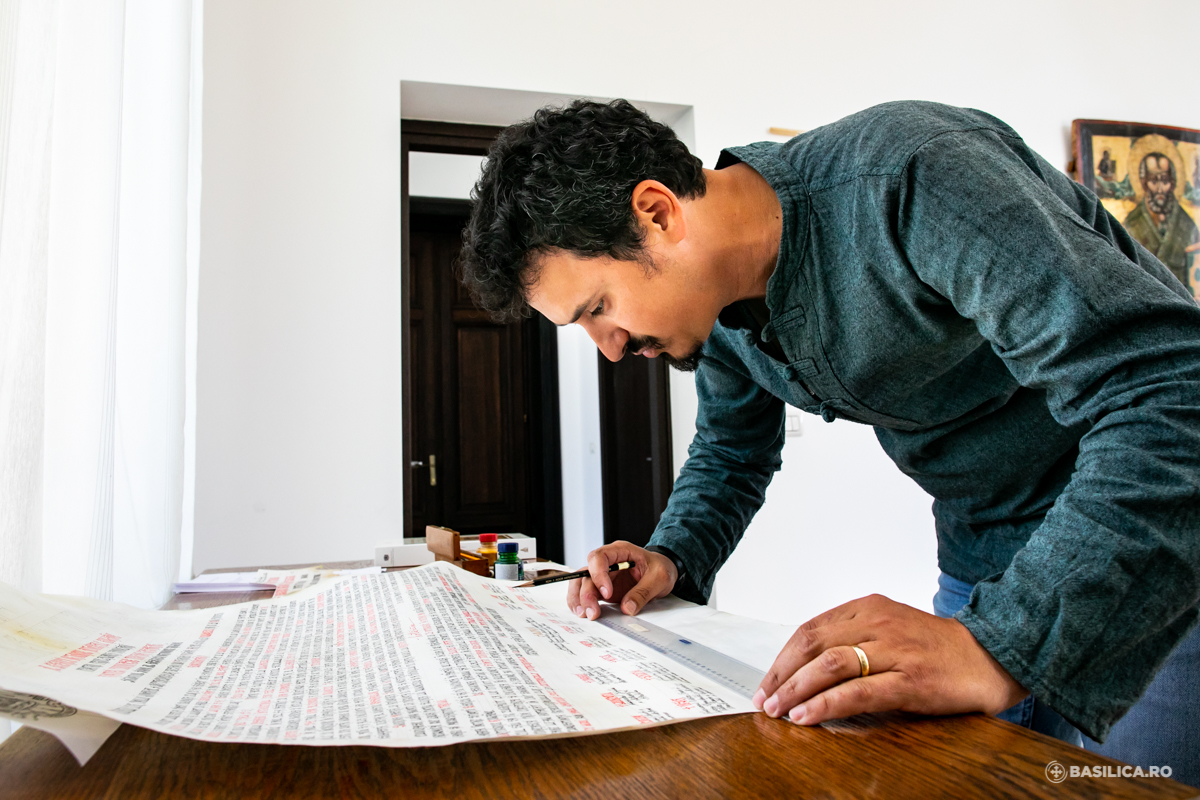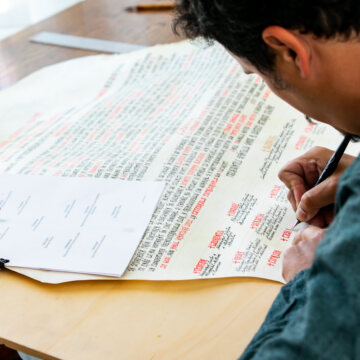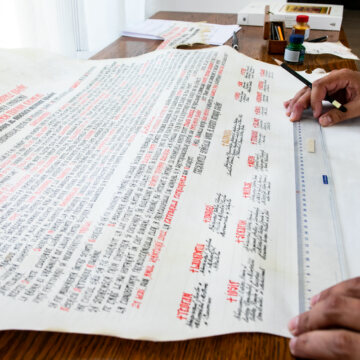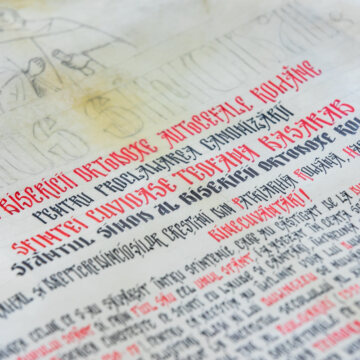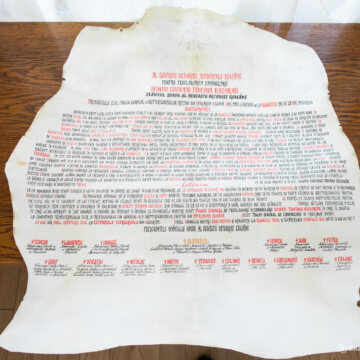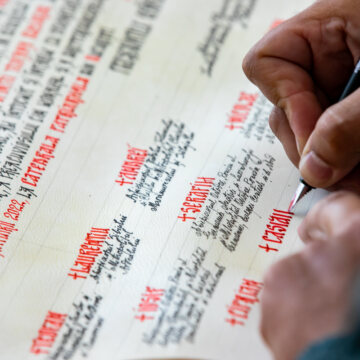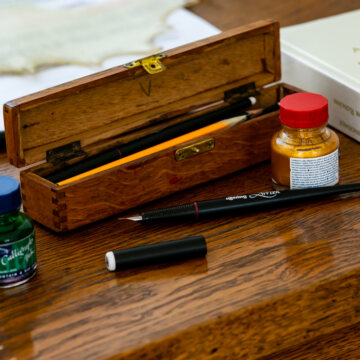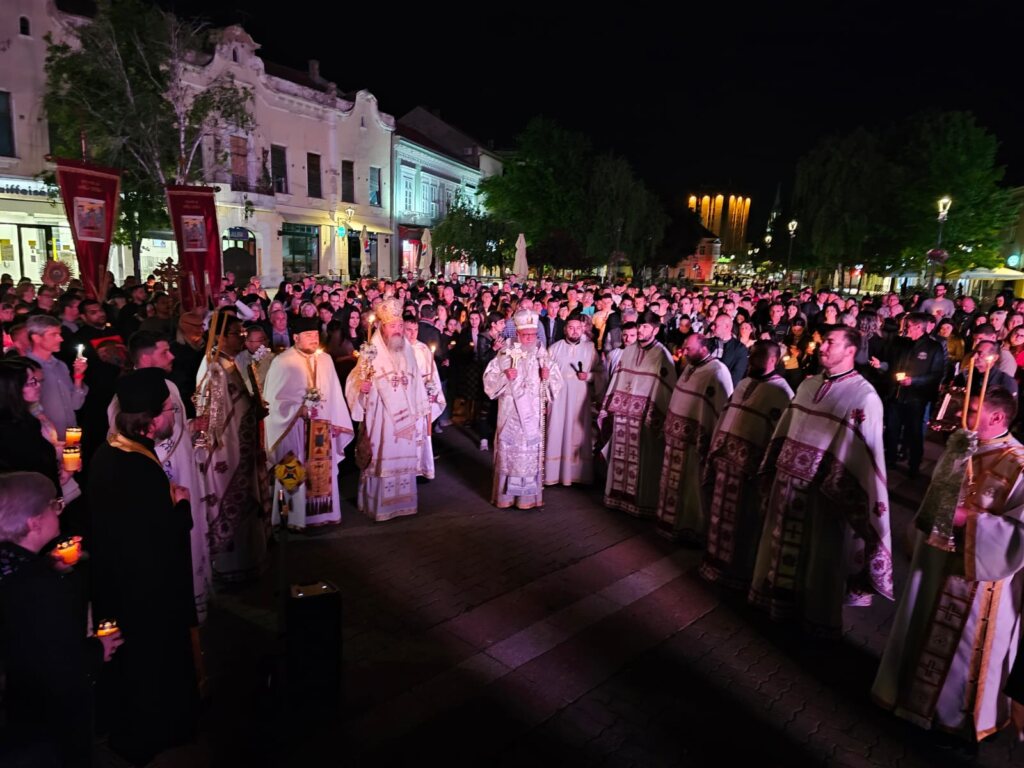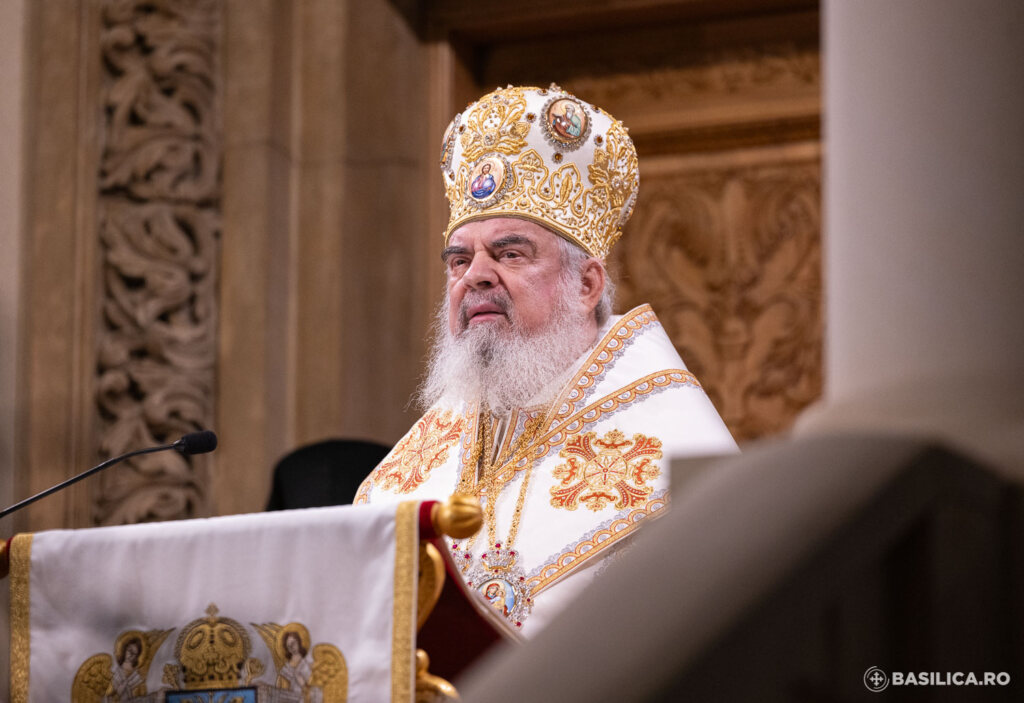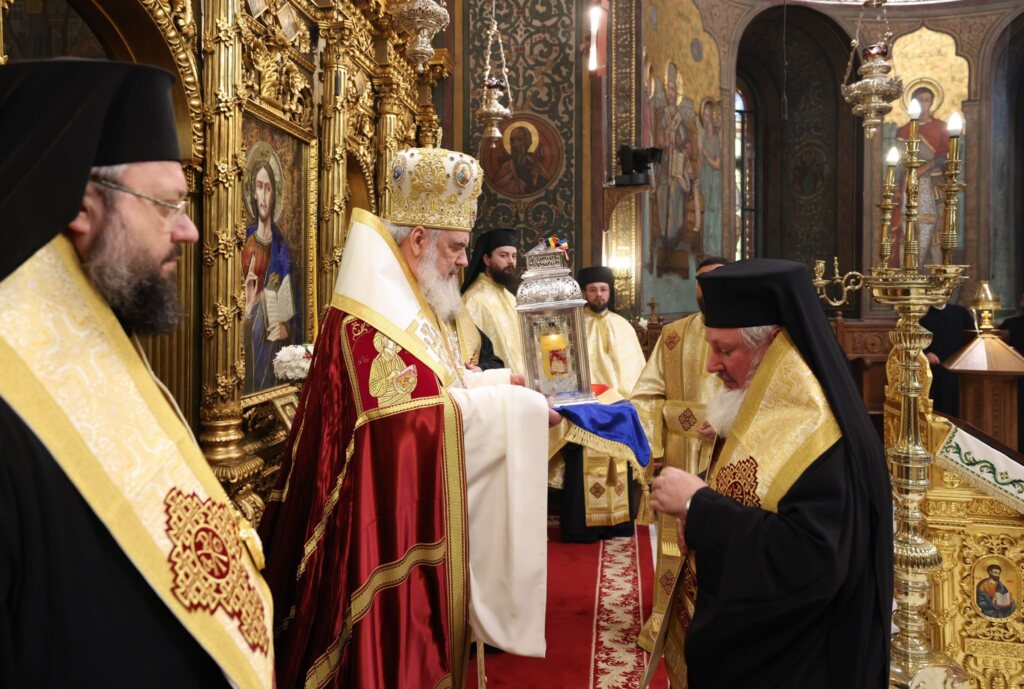We talked with a man who actually writes history. Calligraphically. Iconographer Costel Nacu, a diocesan inspector at the Heritage and Church Painting Sector of the Archdiocese of Bucharest, is the person who creates the Synodal Tomoses and other documents or diplomas of historical value.
We found him working on the Tomos on the canonisation of Saint Theophano Basarab. This activity involves calligraphy, drawing and miniature painting.
He was writing on goatskin parchment. Imperfections and the atypical shape of the support make work difficult, Costel Nacu said.
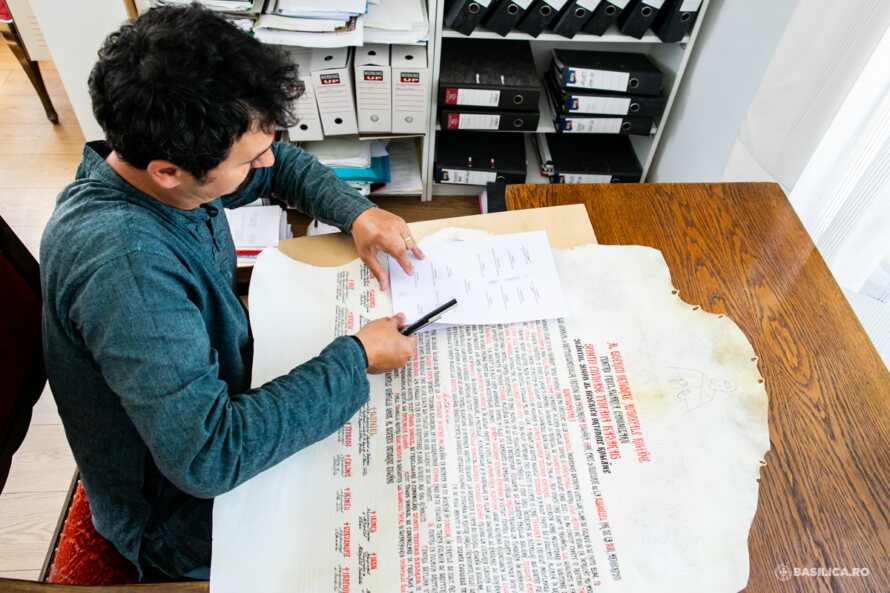
He graduated from the Faculty of Orthodox Theology in Bucharest, the Department of Fine Arts, in 2008. After graduation, he worked as a church painter on various construction sites. Since 2015 he has been working at the Archdiocese of Bucharest, where he has created dozens of such parchments.
“Not only Tomoses on the canonisation of Saints but also Synodal Gramatas for the establishment or elevation of some dioceses, Patriarchal or Metropolitan Gramatas and Decrees occasioned by the election and enthronement of some hierarchs or Decrees for the consecration of churches or ecclesiastical institutions.”
“I got here by the will of God. Other people write beautifully too. I used to have ugly handwriting when I was little. By the fifth grade, I met a very old priest who had extremely nice handwriting, Father Cuza, about 90 years old. I really liked him, and I started imitating his handwriting. I was happy to write beautifully. It wasn’t a goal.”
The iconographer confessed that it was difficult at first. Even though he had experience in painting, this was a new activity. And he had no one to learn from.
Previously, the Tomoses were made by the priest Alexandru Moțoc, General Church Inspector at the Chancellery of the Holy Synod, who died in 2016.
“Because Father Moțoc passed away, it was hard for me at first. I had no one to ask what is being done, how it is being done.”
For such a Tomos, he usually works from 3-4 days to a week, depending on his activities in parallel. He uses calligraphy, ink, and paint colours. In addition, he has various pens and nibs that he modified to write on parchment.
“Another challenge is logistics. Each document is unique, with more or less text, with different coats of arms. The synod, the titles change. I still have emotions if the names of all hierarchs fit,” Costel Nacu said while preparing every centimetre of the Tomos of Saint Theophano.
With the ruler in his hand, he explained that the material where the icon of the canonised saint appears is the skin on the neck of the animal, which often has minor imperfections.

The parchment is made at Bucharest’s National Research & Development Institute for Textiles and Leather.
“We buy more and keep them in stock. If the institute no longer produces, it won’t be easy because we cannot find others in Europe. Only museums and the Church use such things,” Costel Nacu explained.
Costel Nacu is an apprentice of iconographer Dan Ivanovici, who was more than a master. From him, Costel Nacu learned that life as a church painter is more than a job. It is a way of being.
He does not like to copy patterns and says that we would have had only one icon for each saint if everyone had copied. He considers that “it is important for the iconographer to put his mind to the contribution and to relate to contemporaneity because each epoch reflects its thinking.”
We asked him for advice for young church painters. He said briefly, “The same advice I always give: Let them do it with passion!”
Photography courtesy of Mircea Florescu / Basilica.ro
Follow us on Twitter: @BasilicaNews
